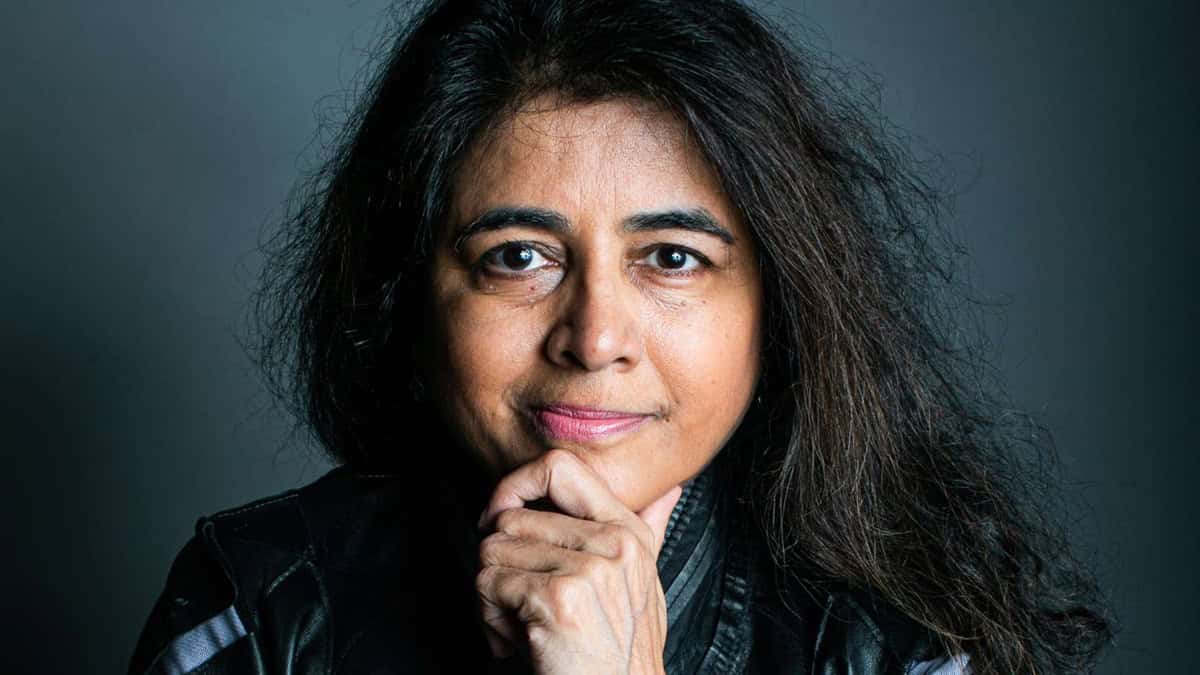Video Gamer is reader-supported. When you buy through links on our site, we may earn an affiliate commission. Prices subject to change. Learn more
Tales of Kenzera: ZAU supports its intricate narrative of grief and acceptance with an unforgettable score. In our Tales of Kenzera: ZAU review, we praised “the game’s stirring soundtrack, mixing African beats with a Swahili choir (from Marvel’s Black Panther) to elevate the game’s traversal and combat encounters.” We got to speak with Nainita Desai, the Emmy award-winning composer behind the rich African score of Surgent Studios’ debut title. This interview touches on her past work (Immortality and Modern Warfare 2), the process behind Kenzera’s incredible soundtrack, and advice for aspiring music creators.
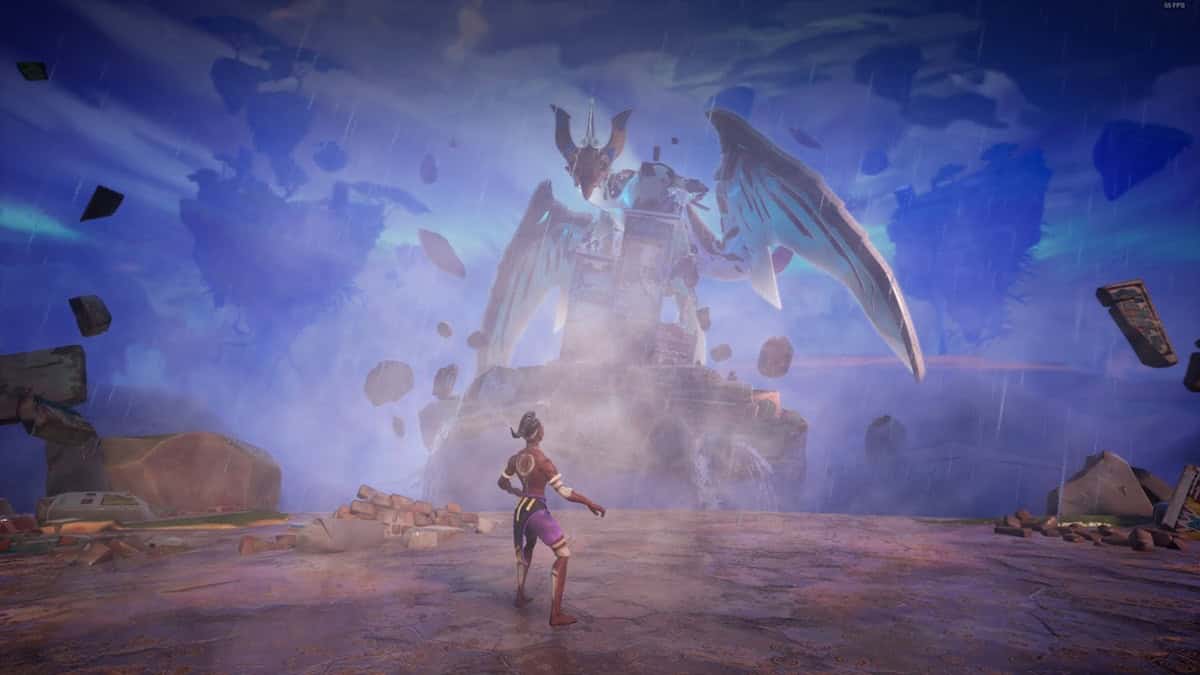
VG: What challenges did you face while pivoting from mathematics to sound design at the start of your career?
Nainita Desai: I’d always been drawn to film music but didn’t realize it was a career I could embark on. At school, I was quite academic and fell into maths naturally whilst also being obsessed with music and film. Working as a sound designer on feature films such as Little Buddha gave me a great foundation in audio post-production and how to drive narrative via sound.
I worked with big teams, eventually doing foley editing, dialogue editing, SFX editing, bits of music editing, and a stint being a foley artist. However, my real passion has always been music. I was really into music production as a huge fan of Brian Eno, Daniel Lanois, Bob Clearmountain, etc. and the ‘sonic sound’ of albums alongside synth artists such as Jean Michel Jarre, Vangelis, and the BBC Radiophonic Workshop. So I moved into music engineering freelancing at studios around London and eventually worked at Real World Studios for Peter Gabriel. I met a music supervisor there who offered me my first commission, writing the score for a travel adventure show for Channel 4.
I made a good living as a sound designer but when I decided to switch to a composer, I gave that all up. It was a huge career risk having to start from the ground up all over again. Miraculously, that first client liked what I did and offered me more work. After that, I took on every composing job I could, having sent my showreel off to hundreds of film, TV, and games companies.
My philosophy has been ‘lots of crumbs make a biscuit.’
Nainita Desai
My philosophy has been ‘lots of crumbs make a biscuit’ and through that, I really honed my skills writing for picture. I learned the craft by just doing it and not assisting other composers, writing scores for all sorts of shows from BBC Natural History, history, and travel shows to ads, factual entertainment, theme tunes, and eventually features and landmark series. It was a huge challenge and struggle. And it was quite scary to think about the financial risks I took. I love collaborations with filmmakers, with different subjects and sonic worlds I can dive into; helping to tell stories and moving people emotionally through the power of music and film.
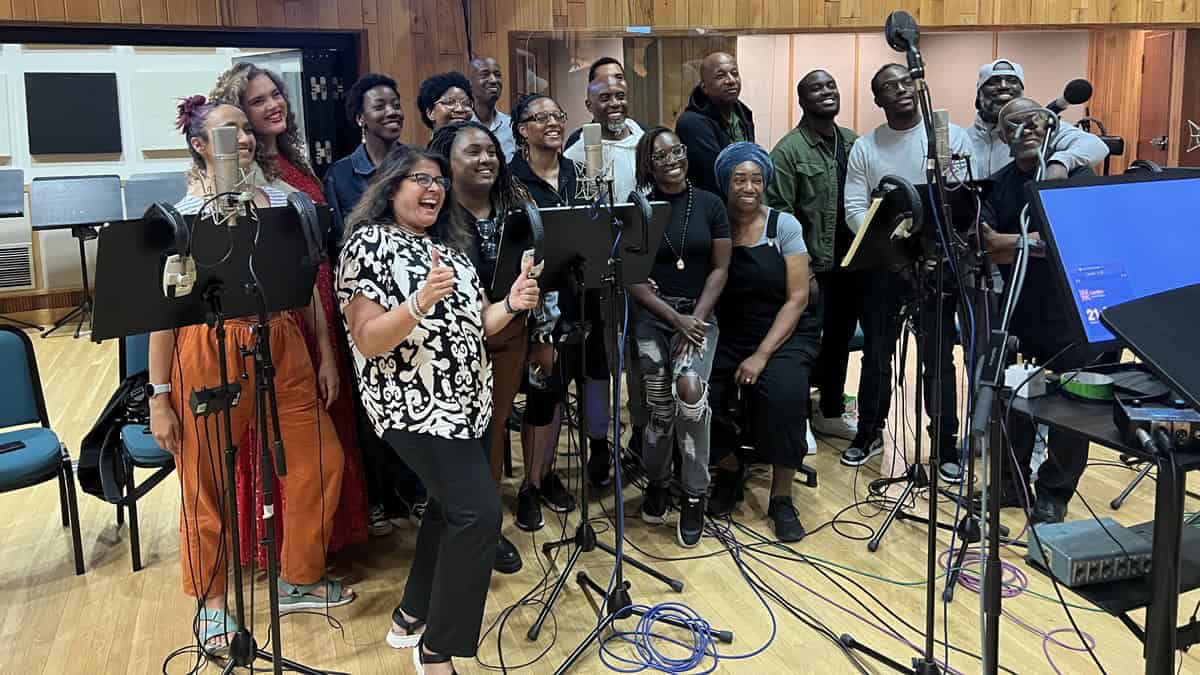
VG: How different is the process of scoring video games like Immortality and Modern Warfare 2 compared to TV and film?
Nainita Desai: Linear genres such as film and TV require a composer to work around elements that align with certain events on-screen. It requires a linear approach to scoring and the user experience is passive. Scoring for games is a much more complex process. I am given rough gameplay videos, concept art, and scripts. The process can take years.
In film, the music is locked to a specific scene and never changes, but with games, the player may linger on a particular ‘scene’ for hours! This means the music has to be structured to allow for situations that can last for an indeterminate amount of time or segue into another musical piece at any given time. Music for games has to be structured in a modular way to accommodate this.
For me, it’s like constructing a pop song; creating a verse, chorus, and bridge but constantly evolving the structure to accommodate ‘repetition fatigue’ so you never tire of listening. Despite the technical constraints of writing for games, and generally not synchronizing the music to particular moments in the visuals, with both forms of scoring, I am writing themes for characters or ideas and capturing the true heart and underbelly of the story through music.
VG: Walk us through the process behind Immortality and Modern Warfare 2’s incredible scores.
Nainita Desai: With Immortality, we devised a unique approach. Immortality is a horror interactive film trilogy so it’s very much a film as well. Sam likes to have the music early on before the actual filming starts. He’s played the music to the cast before or listens to it when writing the script, so as a creative process it all feeds into the other creative aspects of the game.
As the game was being developed, we would have in-depth conversations about the story, the character, and the overarching themes of the game. When composing I dived into the script and tried to capture the essence of the story and translate that into the music. We would discuss the sound palette and come up with techniques where we really played with the sonic sound of the music that’s challenging and experimental. I had no visuals at all, just a huge script and my inspiring conversations with Sam.
We narrowed the score down to 3 musical themes that connect to each of the three movies in which the lead character stars. Mapped with each theme is a subverted theme which all contain a form of sadness as the magic fades or fails, and there’s another twist to the themes that is revealed during gameplay where I had a lot of fun, twisting, manipulating and mangling the orchestral recordings to evoke a ‘hidden’ side to the narrative.
Call of Duty: Modern Warfare was slightly different too. I wrote seven themes. We have 2 main characters – Alejandro from the Los Vaqueros unit of the Mexican Special Forces and Valeria, the leader of a powerful international trafficking organization, who have their own themes. Inspired by the Mexican location, I wanted to bring in sounds inspired by the region but not use traditional instruments from Mexico which would be too light in tone for this score. The score is far from subtle so we needed to find bold differences between their themes. So in terms of the organic sound palette, I opted for wind and bowed instruments to keep them separate sonically.
For Alejandro’s themes, I discovered the Halldorophone, a hybrid electro-acoustic bowed string instrument that works with sympathetic drone strings and feedback.
Nainita Desai
For Alejandro’s themes, I discovered the Halldorophone, a hybrid electro-acoustic bowed string instrument that works with sympathetic drone strings and feedback. Each string has a dedicated pickup and it produces a cello-type sound which is quite unique. There’s a very dark Moorish quality to the sound which for me harks back to the Spanish roots and Mexican connection. It’s a very rare instrument and the players I found are based in Greece. The Halldorophone is a very unpredictable and difficult instrument to control as it can turn into this feedback monster if you’re not careful, which actually makes it very exciting to work with.
I also brought in the LCO, the London Contemporary Orchestra, who I’ve worked with several times before. We recorded a string section at Masterchord Studios in London. Though all the ideas were pre-written before the sessions, we also allowed for some magic to happen where we recorded the main takes and then recorded additional semi-improvised takes in the studio utilizing extended string techniques, often playing very close to the bridge where we got a very gritty dry edgy sound.
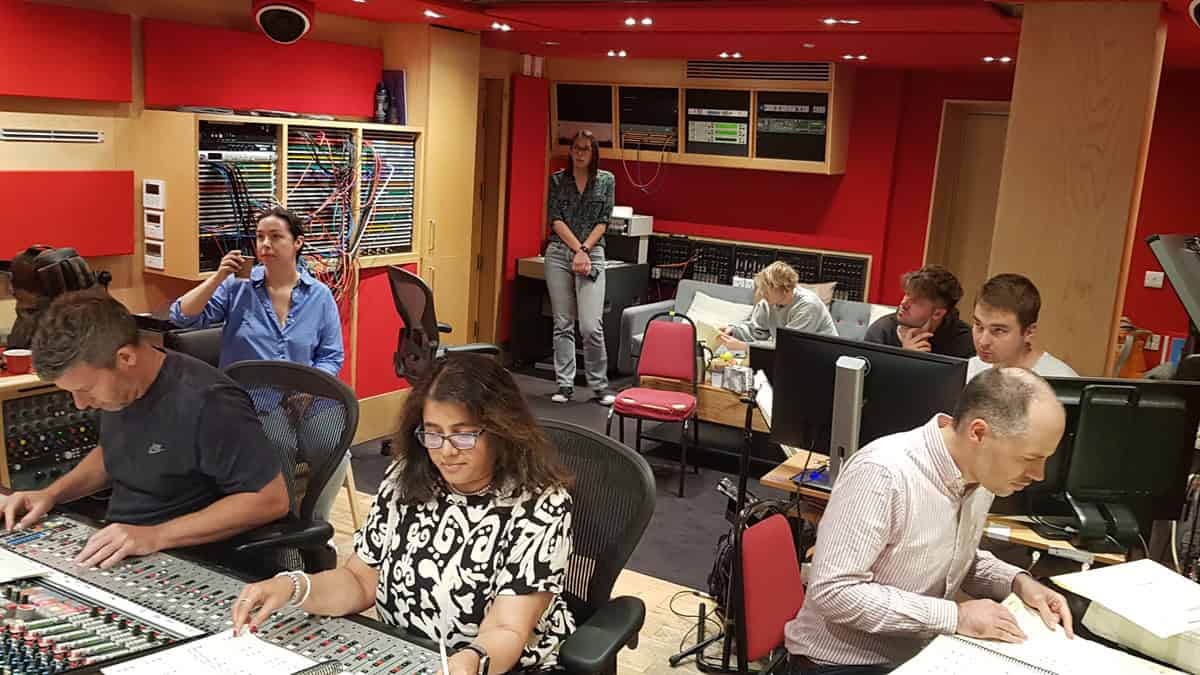
VG: Mixing Afrofuturistic beats and synths with chants and instruments must have been quite the challenge. Could you tell us more about how Tales of Kenzera: ZAU’s music succeeds in fusing these elements together?
Nainita Desai: We wanted a score steeped with orchestral elements fused with African traditional instrumentation and choirs to bring in the feel of the ancestors, shamans, folklore, and Afrofuturism represented by very modern synths and beats reflected in the present-day world of the city of Amani in 2089; a city of tech, innovation, and progress so you have this duality within the score. I was inspired by the traditional fashion, colors, landscapes, and of course the music of the continent. My parents were brought up in South Africa and East Africa so I’ve also spent time there and have a strong familiarity with the music.
VG: What influences did Bantu mythology and the game’s biomes have on the soundtrack? Tell us about the instruments that brought the OST to life.
Nainita Desai: Each of the three main locations in the game is inspired by different geographical and tribal regions; the woodlands are based on the Maasai in Kenya and Tanzania; the Highlands are inspired by the Ethiopian landscape and South African Ndebele Tribe; the Deadlands are inspired by the Tswana tribe in South Africa and Yoruba in West Africa. They all have a different landscape and therefore, a unique musical feel that had to reflect the different biomes in the game.
The orchestral recordings took place at Abbey Road in London with a wide array of diverse musicians. It was very important to me to shine a spotlight on the diversity of African musicians. It resulted in a sonic richness and cultural authenticity to the game alongside the Afrofuturistic elements. Instead of just layering African elements on top of the score, I wanted African music to be embedded into the DNA of the music. The orchestral parts are imbued with the harmonic language and rhythms of African traditions and we Incorporated highly percussive rhythms with strings which were very challenging to play.
One of the bedrocks of traditional West African music is the ancestral Griot tradition, which literally means ‘storyteller’. You can only be a griot if you are born into it where the music is passed down from generation to generation. There are so many different instruments from the various tribes to pull from. I did a lot of research into the music of the region and found various West African master musicians like Djembe and Dun Dun player Sidiki Dembele from the Ivory Coast, Baba Galle Kante who plays the Fulani flute from Guinea and Mali, and Kadialy Kouyate who plays the Kora, a West African stringed instrument that sounds like a harp.

The solo cello played by Elliott Bailey brings in a lyricism that bridges the gap between the West and Africa. The Boss fights are incredibly complex rhythmically and we used many war drums and hand percussion for multiple layers of cross rhythms. I recorded an eight-piece South African choir in Johannesburg. All the lyrics were inspired by Zau’s journey. The group chants are all sung in Swahili with solos sung in the local language Zulu.
We also recorded Voquality, a diverse UK-based choir that recorded the bigger choir elements. They had also performed on the Black Panther soundtrack. The choirs make the music more human with the connection to the player, but it’s also an element deep-rooted In African culture. The solo players and singers don’t read music so I guided their performances and we improvised a lot. I would often sing them melodies and phrases I wanted, but I worked to their strengths and local musical traditions which often resulted in fantastically surprising results.
VG: How did you account for the game’s focus on grief while creating music that would flow alongside its energetic dance-like combat?
Nainita Desai: What attracted me to the game is that even though it covers very deep areas of human relationships and is about the transformative power of love, grief, and loss, it’s not gloomy or dark. It’s wrapped in the rich colorful world of Bantu mythology and the African diaspora of art, culture, and music. The game presents a great deal of duality when speaking to the two versions of Kenzera, grappling with love and the journey of grief.
There is a subtle undercurrent of loss but there were also discussions around a theme of two conflicting ideas, conflict and resolution, the transformation of Zau’s character. All of these came from a place of traditional African vocals and rhythms on one side, juxtaposed with Afrofuturistic synth textures. What is the sound of grief? That’s what Abu posed to me when he approached me to write the score. It’s not just about creating a fun and beautiful experience that people can play where you feel the kinetic energy, but also giving a new perspective on grief. I mean, it is sad. And there is a gravitas to it. Human emotions are messy and chaotic; you can have some days where you feel completely happy, and then others when you don’t want to get out of bed!
Complex human emotions are wrapped up within entertainment and gameplay in that the act of playing the game is like a cathartic experience for processing these emotions. Alongside the epic high-energy aspects of the score that encapsulate anger, danger, and the perils of Zau’s journey with gritty edgy synths, there’s also a lot of mysticism, mystery, and heartfelt emotion. I wanted to create a unique epic musical journey for this coming-of-age story. The emotional moments are as epic as the combat and action and for me, it was one of the most enriching projects to have been a part of.
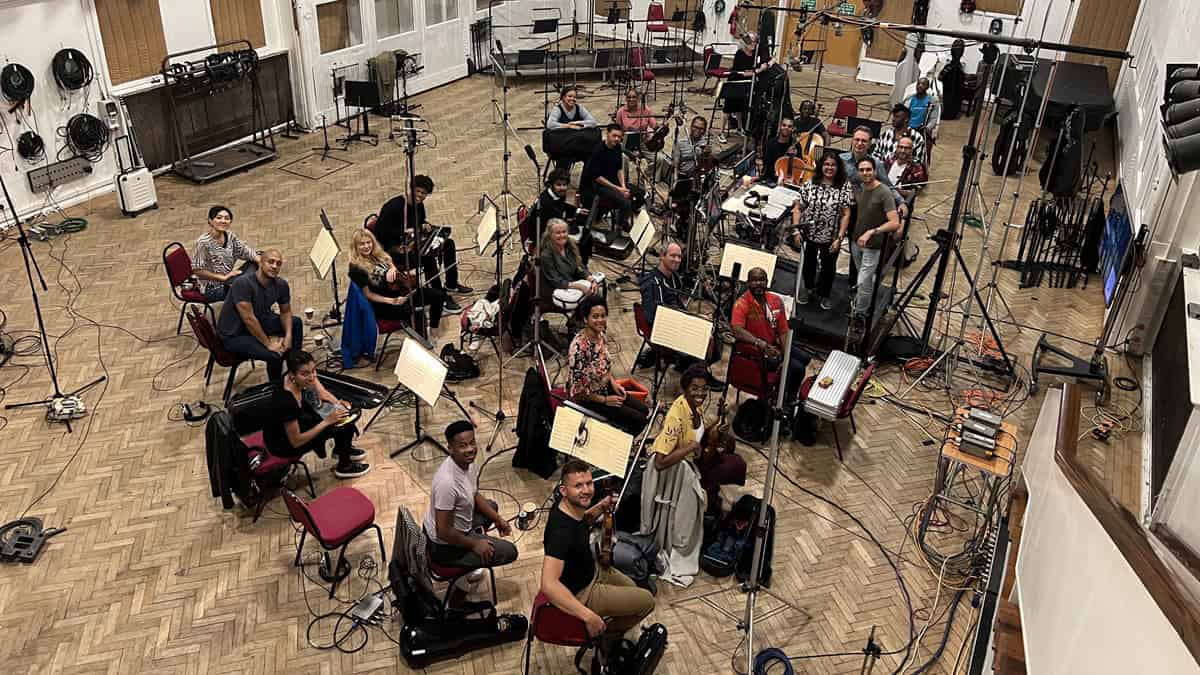
VG: What are your favorite themes to compose? Do ordinary moments require more effort than the iconic ones that players/viewers encounter less frequently?
Nainita Desai: Whether I’m writing an important theme or a subtle underscore, all pieces are challenging. A major theme is, of course, more important as it is used in variations throughout a project. So it has to be flexible enough to be used across a project. As a result, it does take longer to work out and produce. It’s one of my favorite things to do.
VG: What advice would you like to share with aspiring music creators looking to enter the video game industry?
Nainita Desai: This applies to any scoring for linear or interactive media, but if you want to be a video game composer, play games and study the use of music. You have to learn to write in a modular way. Understand the basics of game implementation and how to write in a modular way with stings, transitions, layers, stems, and blocks.
Learn about the industry and find out about every role in audio design in terms of craft, teams, developers, etc. Get involved in Game Jams. Attend games conferences like GDC. Develop strong communication and collaborative skills. Establish good communication with the audio director. Write the best music you can and find a way of injecting your creativity into the music. Clients want you to come up with ideas too.
Be part of a community and network. Get to know other musicians and composers, get to grips with the technology, and embrace it. It’s also really important to develop your own musical voice and to stand out from thousands of other composers. Grab a microphone and record and create your own sounds.
Keep yourself inspired. Write music all the time, even just for yourself. Set yourself up with your own keyboard, laptop, music software, and start writing. You need good sound libraries and if you have instrumental playing skills, all the better. Composing is a life-long learning profession.
Every project is a new challenge. I like to push myself into new areas creatively and musically that I’ve never worked in before. You also need to have a thick skin! Learn to take feedback in a positive way. The most important thing is to serve the game and work as part of a team. It’s a very collaborative art form.
